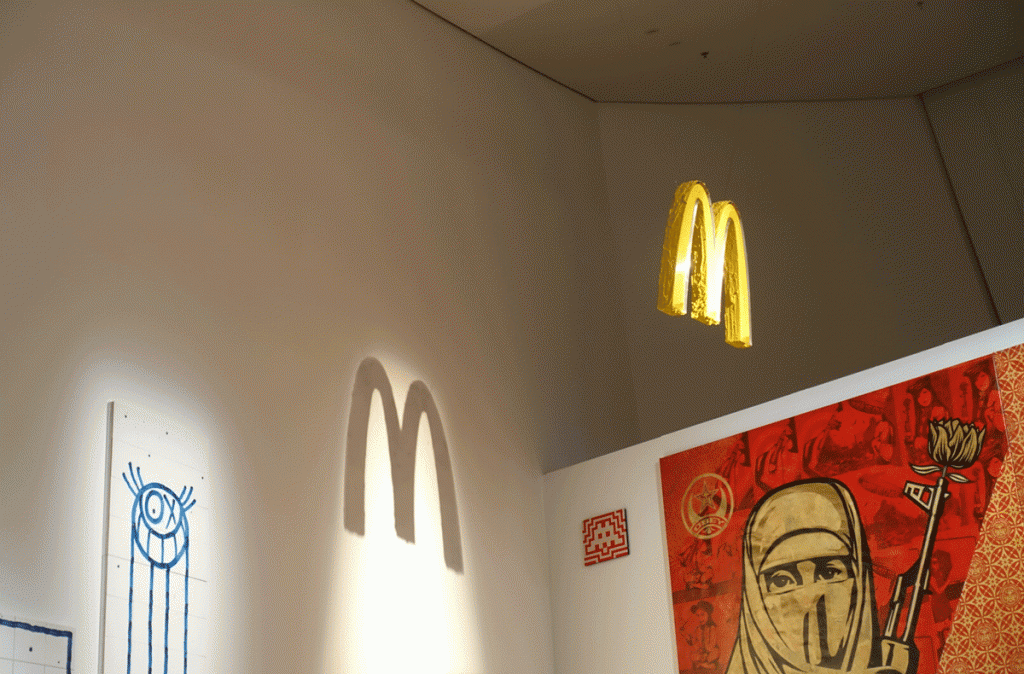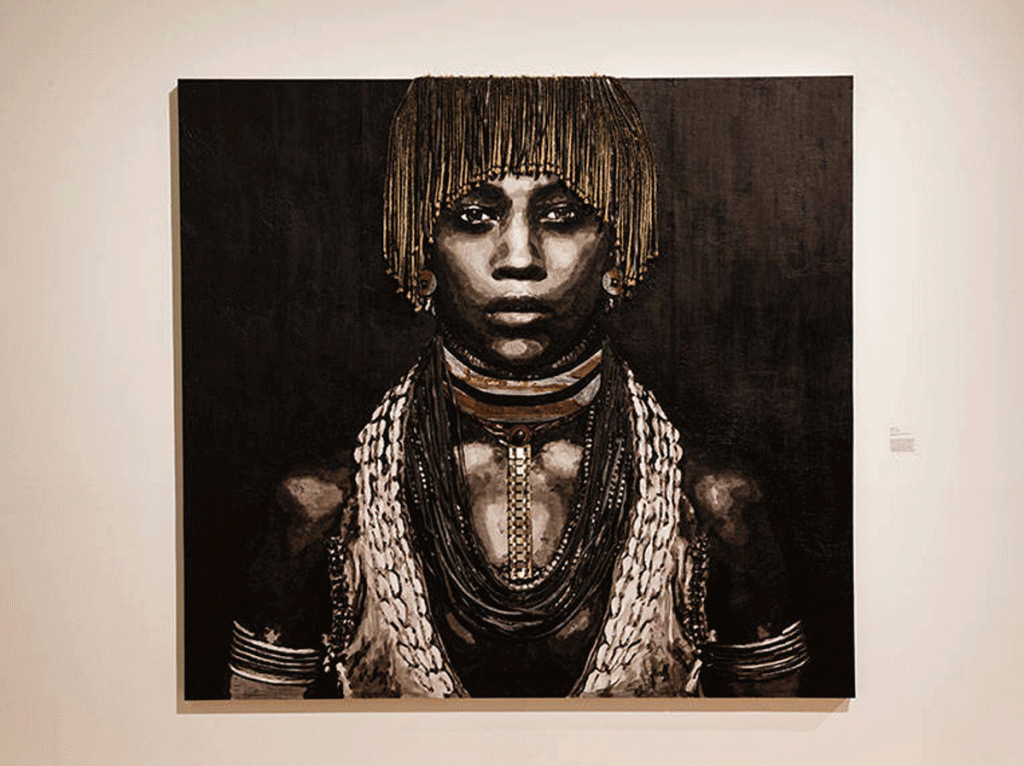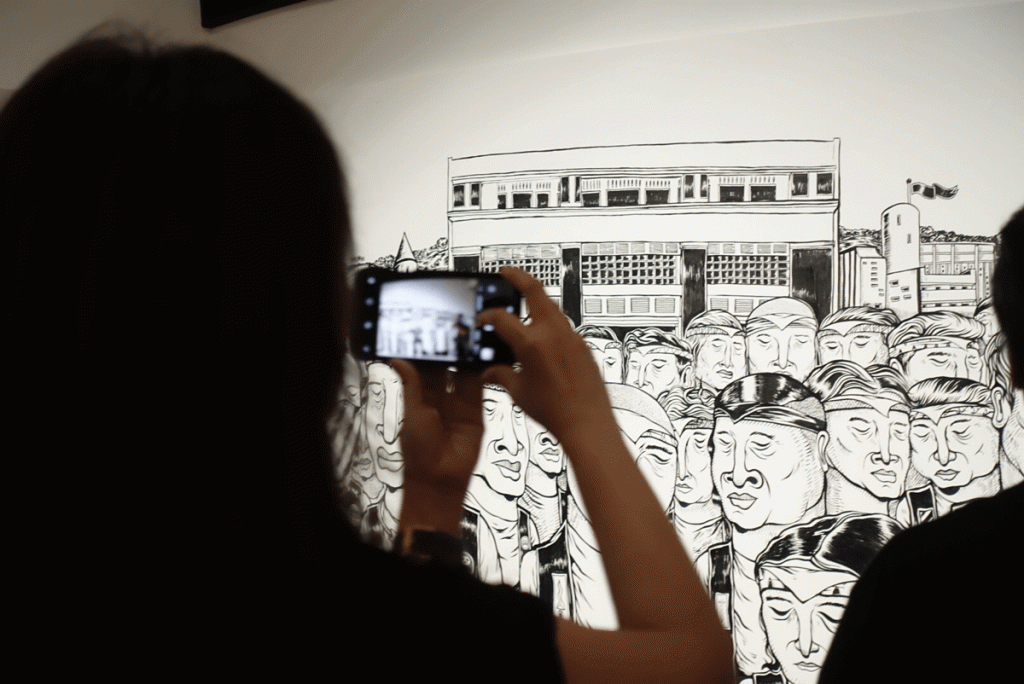Where does street art belong?
Does it belong in the streets, on the facades of crumbling abandoned buildings, on the sides of a train?
Or does it belong on the walls of museums, in galleries behind some glass and black tape, or in the houses of rich people?
Frankly, I don’t think it matters.

“That’s because so many people have a fixed mindset of what street art really is,” she says. As such, what Art from the Streets aims to do is reframe the public’s perception of what street art can be.
Honor’s goal is ambitious for any exhibit but an important one—especially in Singapore where our perceptions of street art are often confined to only one of two things: commissioned pieces like the murals along Haji Lane, or illegal vandalism.
It may even be unusual to some that Singapore, despite its unrelenting stance against unsanctioned street art, has welcomed such an exhibit, even going so far as to include it as part of this years Singapore Art Week.
To Magda Danysz, guest curator of Art from the Streets, all this is inevitable, given what a cultural juggernaut Street Art has become in the 21st century.
“You can find street art in any corner of the world, from Siberia to Australia to Singapore,” she says. “Never has a movement been at such a global scale before.”
“Street art is definitely the most important art movement that has emerged in the 21st century,” she announces, and as such, has become impossible to ignore and exclude any longer, even by Singapore.

While there remains a legitimate concern that art taken from the streets and into museums may impinge on the artistic integrity of the work, such a move can be of practical benefit to the street art community as well.
Having street art in recognised institutions not only lends legitimacy to the movement, but it also enables the artist’s work to stay up for a longer period of time and to reach a wider audience.
It is for this reason that pioneering street artists have long been showing their work in renowned galleries since the 70s in New York and continue to do so today, says Magda.
Not only that, but creating art in spaces besides the street also allows for street artists to grow and experiment with their craft.
Says French artist YZ, one of the artists who created artwork specifically for the exhibit,
“Taking street art inside isn’t ironic but rather, an evolution of the artist and his or her work.”
“When we create things in a different space, we do it with a different meaning as well. It’s not as if we are simply replicating the same things inside and outside,” she tells me.
“It all depends on the context, the location and the environment. We can create installations, work with photography, videos, and use different materials that can be brought into a museum.”
A change in space thus serves provides a new avenue for an artist to express themselves differently.
Echoing YZ’s words is Speak Cryptic, a Singaporean street artist.
“When street art enters into spaces like a museum, I don’t question if it’s street art or not. I look at it as a chance for me to be comfortable, to take my time and look up close.”
Moreover, when things are indoors, he doesn’t have to worry about whether it’s too hot or going to rain.

Not only does Art from the Streets hope to reframe our understanding of where Street Art can take place, it also hopes to change what is considered Street Art as well.
Besides the more commonly known methods of graffiti and tagging, the exhibit also features artworks that upcycle urban materials and make use of stencils, calligraffiti, and painting techniques.
What we end up with are pieces that resemble fine art more than they do ‘street art’.
Such change is necessary, suggests Magda, after all, “street art was always meant to act as a mirror to society, which itself is never static but under constant change.”
Prior to Art from the Streets, I like many others had (unknowingly) placed street art in box, defined by spray cans, deviant activity and boys in hoods.
Although I possess a particular fondness of graffiti and tagging (which originated in the 60s) I also understand now that with each new wave of street artists comes new techniques, new imaginations and different ways of both seeing and rebelling—and that’s alright.
What is most important perhaps, regardless of material or location is that street art retains its element of controversy, and if that is best expressed using pipes or bicycle wheels, then I’m all for it.

In a country where gold foiling HDB staircases and pasting stickers on traffic light buttons in the name of art clashes with the law, isn’t a ticketed exhibition on Street Art just rubbing salt in the wound?
Well, that’s because we’re looking in the wrong direction.
Often times when a piece of unlicensed work appears, the attention it garners from the public and debate that follows is fixated on the legality of the work, rather than the message that the artist is trying to put across.
“I don’t think Singaporeans have actually had an opportunity to sit down and talk about Street Art,” says Speak Cryptic. “We’re still busy talking about whether it is art or vandalism.”
Citing the example of Priyageetha Dia’s golden staircase, he adds, “Only a minority of the comments on Facebook were talking about the work and references to class and society that she was trying to make. Even though she said it in the comments section, it got lost because of all the noise.
“Especially in Singapore, anyone who is willing to go out there and risk getting caught means that whatever he or she is trying to say is important and we should listen.”
Rather than wait for the state to take the lead and create a space for Street Art to flourish, we can start by re-examining the ways in which we look at it.
Instead of going around in circles, debating if it is art or vandalism, Speak Cryptic encourages us to treat Street Art like any piece of work in the museum, to look at it and ask ourselves, “Is this nice? What does this mean? Does this provide value to me?”
If it doesn’t, then move on.

Things could be a lot better for sure, but at least this allows for an artist’s work to remain, to be seen and to be heard, rather than have his work painted over by the authorities or drowned out in debates of “is it art or vandalism?”
As Speak Cryptic says, it’s up to us.
“We can try to provide the content and talking points but it doesn’t mean anything if there is no audience or if no one takes it seriously. Every exhibition including this one has an intention of wanting to start something new.”
“This might not do anything, but it might.”






